Join The Mass Call Tuesday October 21st!
After Oct 18 No Kings Day, what's next? Join Oct 21 mass call. Turn protest momentum into sustained organizing that can shape our history.
TL;DR: No Kings day was incredible and continues to gain us momentum towards greater action. Join Tuesday’s (Today!) Mass Call (Oct 21, 8PM ET/5PM PT) to strategize next steps. Mark November 22nd for the Remove the Regime convergence in Washington, DC, when we take the fight to the seat of power. In-person action seeds the deeper organizing that sustains movements: mutual aid, boycotts, coalition-building. The infrastructure matters as much as the march.
The Architecture of Resistance:
What History Teaches About the Days After
On August 29, 1963, a quarter-million Americans gathered on the National Mall in a demonstration that seized the nation’s attention. Martin Luther King Jr.’s “I Have a Dream” speech became the enduring image of that day, replayed in classrooms and documentaries for generations. By dawn on August 30th, organizers Bayard Rustin and A. Philip Randolph weren’t celebrating, they were already in meetings, translating the march’s energy into the legislative strategy that would become the Civil Rights Act of 1964.
The march was never the victory… It was the recruitment drive.
October 18th, 2025, No Kings Day demonstrated that when we are called to defend our democracy in person, we answer. All fifty states, thousands of organizers, and millions of attendees. If you’re reading this wondering “what now?” asking the same question people across the movement are asking, then you already understand that visibility without strategy dissipates into memory.
Nearly every successful movement in American history faced this identical inflection point. The 1913 Women’s Suffrage Parade in Washington brought Alice Paul’s National Woman’s Party into the public eye, but suffragists spent the next seven years coordinating state-by-state campaigns, hunger strikes, and relentless lobbying before the 19th Amendment passed. The 2017 Women’s March became one of the largest single-day protest in American history, drawing millions nationwide, yet its lasting impact came through the Indivisible groups those marchers formed, local organizing cells that spent eighteen months registering voters, flooding town halls, and building the infrastructure that flipped the House in 2018.
This pattern holds across movements and centuries: Mass mobilization opens the door while sustained organizing walks us all through it.
Tuesday’s Mass Call:
Protest Momentum to Collective Strategy
When: Tuesday, October 21st, 2025 | 8PM ET / 5PM PT
Where: Online Mass Call via Mobilize
About this event: Join movement leaders and fellow local activists the Tuesday after the big event to come together, celebrate what we accomplished, and learn about what’s next.
In 1960, four college students sat down at a Woolworth’s lunch counter in Greensboro, North Carolina, refusing to leave until they were served. Their action triggered sit-in protests in dozens of cities, as student organizers expanded the tactic across campuses and local communities. The success of the sit-ins rested on coordinated student activism: meeting in dorms and auditoriums, forming committees, pledging show-up discipline, and continuing until businesses integrated. The sit-ins succeeded because they showed up together, with a plan.
You can spend months trying to figure out how to be useful, or you can spend an evening hearing directly from organizers about where the movement goes from here. Mass calls convert isolated frustration into coordinated power because they connect you with the people in your area already doing the work, people who know which tactics work, which groups need volunteers, and how to plug into what’s happening next. You might come into this alone but you leave with a team, a task, and a strategy.
November 22nd in Washington:
Geography Is Strategy
“When will we actually go to Washington? What are we waiting for?”
If you’ve asked this question, or seen it catch on through group chats, Discord channels, and comment sections, you’re touching on something organizers have debated since the first No Kings actions: the tension between decentralized demonstrations that show nationwide reach and concentrated actions that bring the fight directly to the source.
Both matter for different reasons, and at different moments.
November 22nd, 2025. Washington, DC. Remove the Regime.
The 1932 Bonus Army, 17,000 World War I veterans demanding early payment of their military bonuses during the Depression camped on the Capitol lawn for weeks. They didn’t win their immediate demand, but the political pressure they created in Washington helped establish government responsibility for veterans’ welfare, eventually leading to the G.I. Bill in 1944 that followed.
The 1963 March on Washington put civil rights at the center of national conversation in a way that regional protests, however powerful, could not.
The 1969 Moratorium to End the War in Vietnam brought half a million people to DC, forcing President Nixon to abandon plans for military escalation.
The 2004 March for Women’s Lives drew over a million people to the Capitol, protecting reproductive rights for another decade.
When you need the walls to shake where policy gets made, you come to where the policymakers live to demand justice.
The Remove the Regime action on November 22nd is amplifying efforts by bringing the collective power of the people to the place where Congress works and where the administration operates. This is organized by members of the Removal Coalition, the same network that recently coordinated one of the largest single-day congressional lobbying effort for impeachment. These are organizers who understand that symbolic gestures don’t always move politicians, but constituents showing up in overwhelming numbers absolutely makes a difference.
The multi-day action launches November 20th and builds toward the 22nd, featuring:
Veterans and military families demanding accountability
Faith leaders from multiple traditions speaking to moral imperatives
Musicians (The Dropkick Murphys headline Saturday’s rally)
Comedians using humor as the pressure valve democracy needs
Movement leaders who’ve been in these fights for decades
Social media voices amplifying the action to millions
And of course, everyday Americans who’ve never done this before but recognize what is at stake
Our demands are clear:
Congress must end its complicity and ACT for the people.
The sabotage of democratic institutions and rule of law must stop.
This administration must be impeached, convicted, and removed, NOW.
Political scientists who study regime vulnerability identify specific markers: historically low approval ratings despite a strong economy; defection of previously loyal allies; mounting legal troubles and corruption investigations; visible cracks in the enforcement apparatus; growing public willingness to openly criticize the regime. Every single marker is present now. This administration isn’t the juggernaut it appeared to be in its first months, it’s wounded, stumbling, desperate to project strength it no longer possesses.
Authoritarian regimes collapse when people stop being afraid and start showing up in numbers impossible to dismiss. November 22nd is another major opportunity to be that undismissable number.
The Protest Pipeline: How Marches Seed Movements That Actually Win
Let’s address the cynicism directly, because it’s everywhere:
“Do protests even matter anymore? Shouldn’t we focus on ‘real’ activism?”
This framing misunderstands what in person protests actually do.
When Frances Perkins watched the Triangle Shirtwaist Factory fire from Washington Square in 1911, seeing workers jump to their deaths because locked doors trapped them in the burning building, she didn’t immediately write labor legislation. She joined the protests outside the factory ruins, where she met other reformers, labor organizers, and politicians equally horrified. Those connections, formed while standing vigil, became the coalition that pushed through workplace safety laws, and later the New Deal labor protections Perkins championed as Secretary of Labor.
The protest was where the coalition formed that made policy change possible.
Contemporary research by sociologists Dana R. Fisher at American University and Erica Chenoweth at Harvard confirms this pattern across movements. Their studies tracking protesters over time reveal that mass demonstrations function primarily as recruitment and networking events, the entry point through which citizens become sustained activists. Here’s the actual pipeline:
Stage One: The march gets people through the door.
Most Americans’ first political act beyond voting is attending a protest. It requires no special expertise, no long-term commitment, no insider knowledge. Just showing up. That accessibility matters enormously and it’s why protests consistently draw people who’ve never engaged politically before.
Stage Two: At the march, they find their people.
You strike up a conversation with the person next to you holding a similar sign. Someone hands you a flyer about a local organizing group. You exchange numbers, join a group chat, learn that coordinated action is happening and you can be part of it. The march introduces you to the infrastructure.
Stage Three: Those connections fuel everything else and other actions.
Boycotts require sustained coordination and mutual accountability and relationships built standing shoulder-to-shoulder make that possible.
Mutual aid networks require community trust and community engagement.
Voter registration drives need volunteers, recruited from people who came to one rally and stayed for the cause.
Pressure campaigns targeting elected officials need volunteers making calls, attending town halls, writing letters organized by community members.
Direct action requires logistics, planning, and people willing to take risks together, that coordination grows from relationships formed during public demonstrations.
The 1963 March on Washington didn’t pass the Civil Rights Act but it created the activated network of citizens who spent the next year calling senators, testifying at hearings, organizing in their home districts, and applying the unrelenting pressure that forced Congress to act. The 2017 Women’s March didn’t flip the House in 2018 but it introduced countless of Americans to their local Indivisible chapters, who then spent months on end doing the unglamorous work of constituent engagement that created the blue wave.
The march is the front door. What we build inside is the movement.
So when you travel to Washington on November 22nd, you’re meeting new people making the trip, coordinating travel, sharing hotel rooms. You’re discovering which groups in your state are organizing boycotts of companies bankrolling extremism. You’re learning about mutual aid networks supporting vulnerable community members. You’re connecting with others planning the next phase of action, and the one after that.
The march is where you stop being an observer and become an organizer.
What was your first protest?
How did it connect you to deeper organizing?
Share your story below.
Your Action Plan:
From Reader to Organizer in Four Moves
Here’s your concrete path from where you are now to where the movement needs you.
🎯 Move One: Join Tuesday’s Mass Call (October 21st, 8PM ET)
Register here for the What’s Next After No Kings mass call
Leave with more information, tactics, and a clear understanding of the strategic landscape. If you’ve never organized before, this call will demystify the process.
🏛️ Move Two: Commit to November 22nd in Washington or to Help Spread Awareness as Much as Possible!
Start planning your travel now. Traveling alone feels intimidating, coordinate with others. Use Tuesday’s call to find people in your area making the trip. Regional groups are already organizing carpools and shared housing. Going together makes it logistically easier, physically safer, and exponentially more impactful when your delegation arrives as a coordinated unit.
💬 Move Three: Join the 50501 Discord
Join our Discord Server
Social media is for broadcasting. Discord is for finding your groups.
Every state has dedicated channels, or had a channel to guide you to the right spot. This is where you find the people in your city coordinating local actions. Where working groups form around specific campaigns, congressional pressure, corporate accountability, mutual aid, media outreach. Where templates and resources get shared and where new organizers learn from experienced ones.
🌐 Move Four: Follow, Engage, And Amplify Across Platforms
The movement exists everywhere because this fight is everywhere. You don’t need to be active on every platform. Pick a few where you naturally engage and use them strategically.
🌍 Check out our Website: fiftyfifty.one Our Resource Hub
🎯 Discord Server: 50501 For Finding your groups
💬 Reddit: r/50501 Community discussion
📘 Facebook: 50501 Movement Group More Community discussions
📺 YouTube: 50501 Channel Videos from action
🎵 TikTok: 50501Movement Reaching Gen Z organizers, viral moment amplification
Strategic engagement tip: Don’t just follow, interact.
Share posts with personal context explaining why it matters to you.
Tag friends and family you think would care.
When you attend an action, post about it and use movement hashtags.
Every share extends reach and every personal testimonial builds community.
🤝 Bonus Move: Find or Start Your Local Group
The Discord has channels for your state where you can connect with others in your area. The 50501 website also has resources for local organizing if you’re starting from scratch.
There are still many places without established groups waiting for someone like you to take the lead. Sometimes being the organizer just means being the person who says “let’s meet at the library on Saturday” or “who wants to carpool to DC?” You don’t need permission, a fancy structure, or all the answers, we just ask that you be safe and follow our values.
Visit our website for Organizer Toolkits.
Starting a local group means creating the space where people can find each other and figure it out together. Post in your state Discord channel. Share on local Facebook groups. The people who show up are your organizing committee.

The Question Your Future Self Will Ask
In 1938, a reporter asked a German woman in Nuremberg why she hadn’t opposed Hitler’s rise. Her answer has stretched through decades of historiography: “What could I do? I was just one person.”
The question that haunts historians, what would have happened if every person asking “what could I do?” had actually done something. Joined the groups that existed. Showed up to the demonstrations that happened. Supported the resistance networks that tried...
Years from now, you’ll be asked what you did during this period. Your children might ask. History certainly will. And most persistently, you’ll ask yourself.
The answer can’t be “I hoped someone else would fix it.”
Tuesday night: Hop on the Call! Get the strategy.
November 22nd: Show up to DC or help get the message out.
Everything in between: Organize like the outcome depends on it.
Thanks for reading!
-Blue with The 50501 Movement Substack
Subscription payments go towards our Substack content creation team.
Thank you for your support towards independent journalism.
If you genuinely cannot make Washington on November 22nd, that’s okay. Your local effectiveness matters as much as national visibility. Join the Discord and your state channel to find what’s happening near you. This movement has room for everyone, wherever you are, whatever you can contribute, just be safe and follow our shared values. The march in DC will be powerful. So will our quiet actions. Both matter. Pick yours and commit.


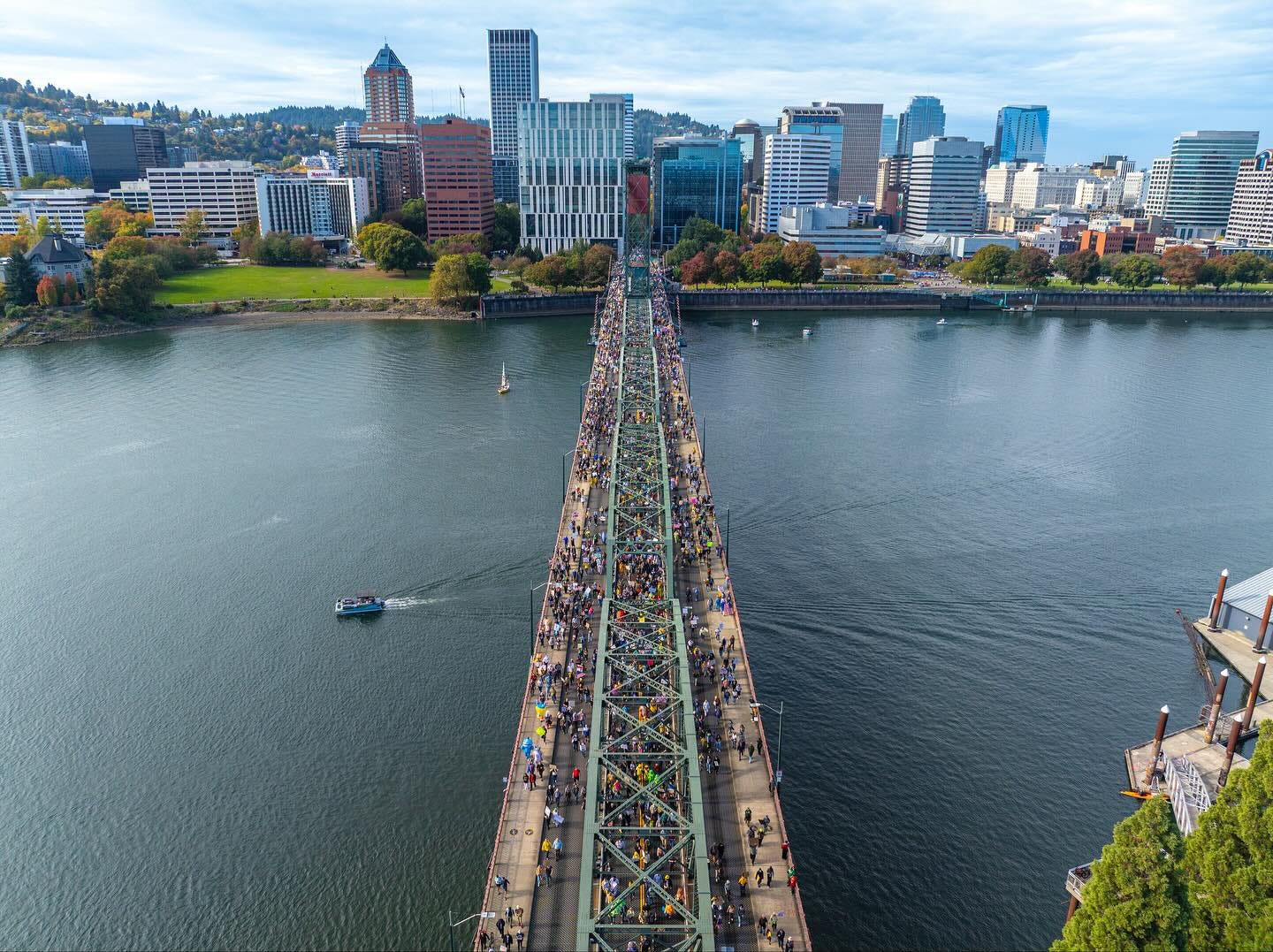
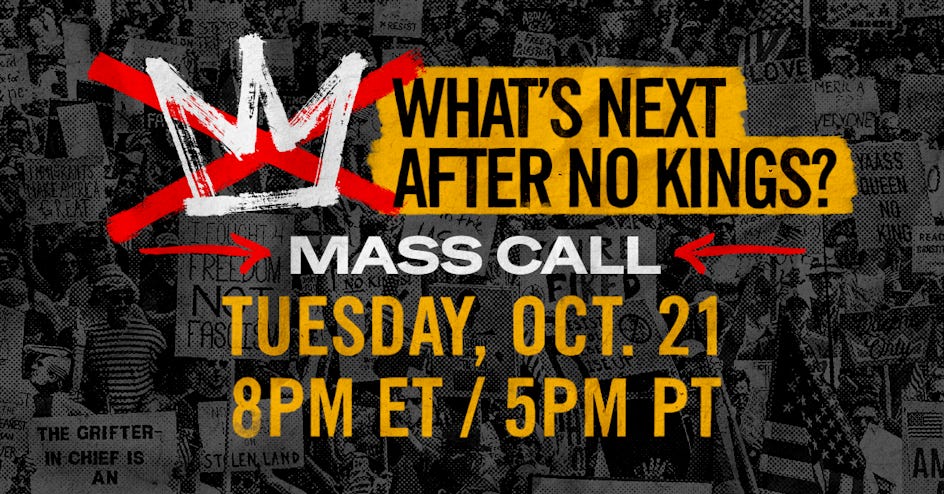
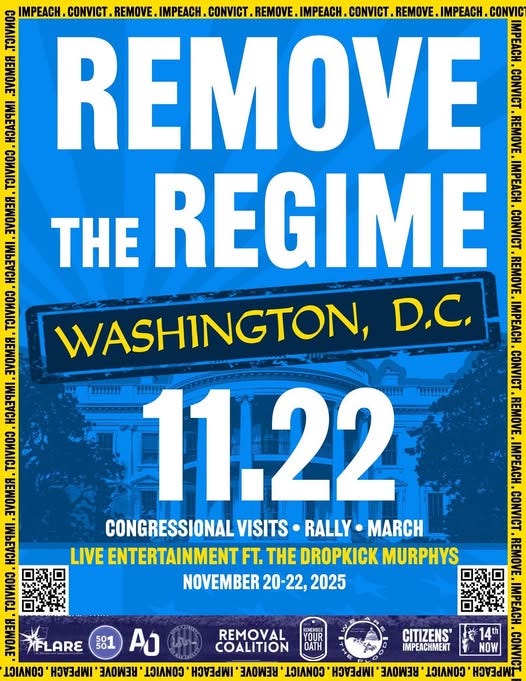
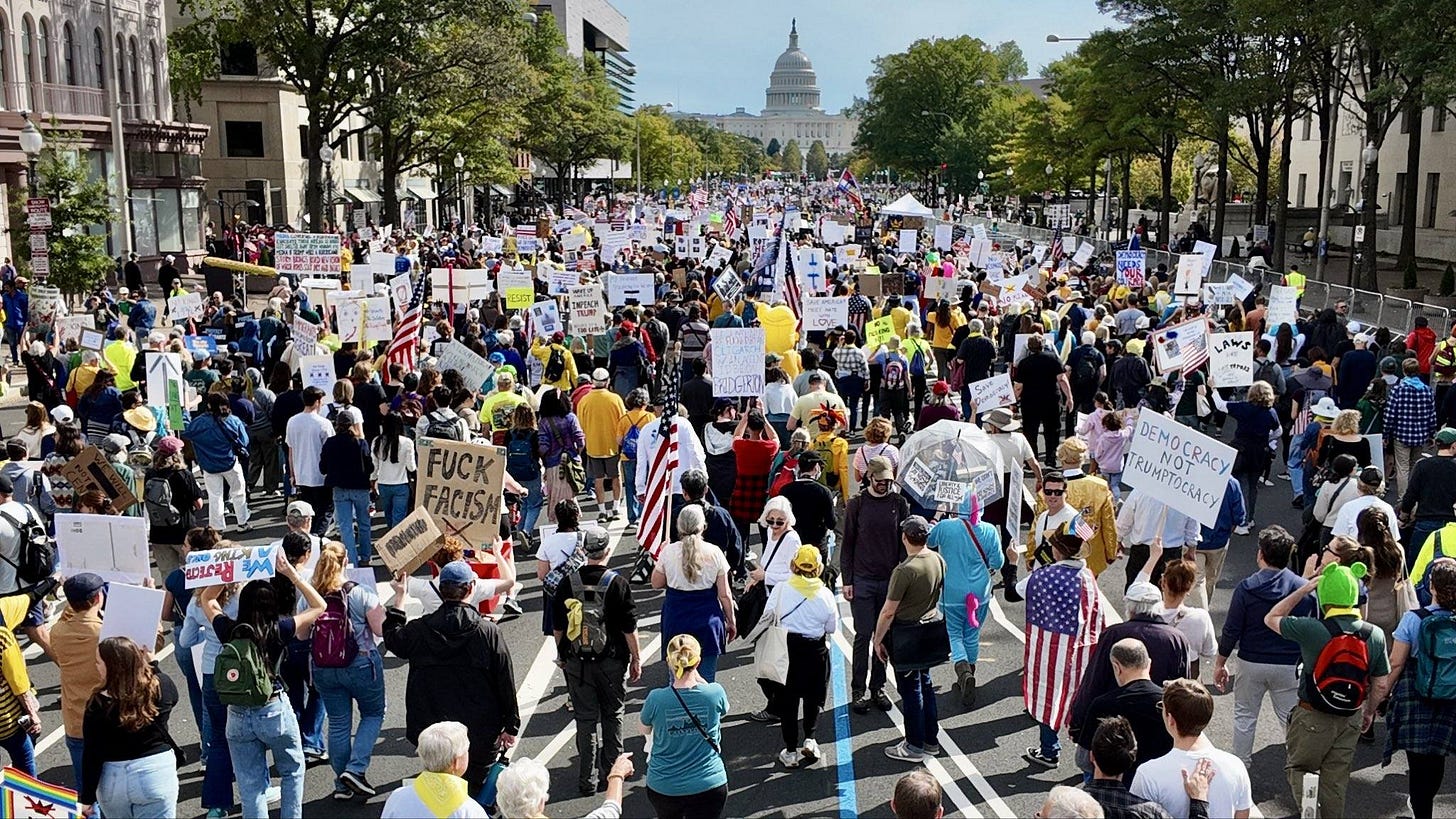
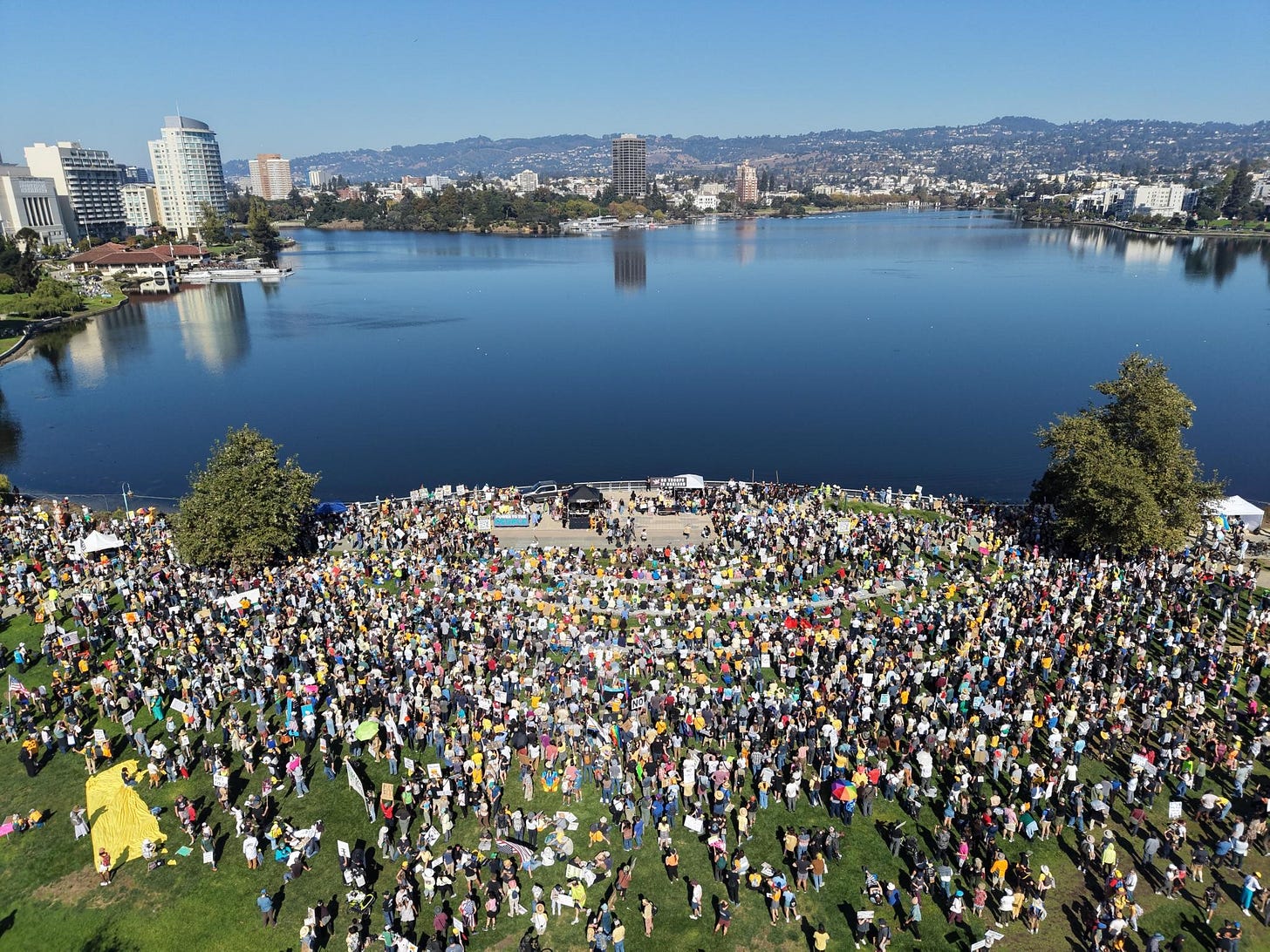
1969 was my freshman year in highschool. Many students marched out of class to the nearby park to protest to make Martin Luther King Jr. birthday a national holiday. My first protest.
If we don’t Stand Up for America NOW, we may not have another opportunity to save one piece of freedom or democracy. We, the People have tremendous Power when we Unite and gather for the common good of our country. This isn’t a time to let fear or dollars dissolve you. This is a time to grab the hands of your friends, pool your dollars and make your way to D.C. as a Senior citizen, I have protested many wrongs in America and at every protest, we made our mark and moved forward. This is the time to choose what kind of government you want to govern you and your family and your choices are Democracy or Autocracy and there are no other choices. If you want your kids educated in quality public schools, March. If you want to own your own body, March. If you want billionaires taxed like you are, March. If you live in rural America and want opportunities to thrive again, March. If you are a disgruntled and misled farmer whose property is being eyed by foreigners, March. If you are a scientist whose research dollars have stopped, March. If you are a fired federal employee who got fired for no reason whatsoever, March. If you are a licensed doctor or nurse who can’t proceed forward in medicine, March. If you are a parent whose kids are being denied medical care, March. If you depend on SNAP and are working two or three jobs to make ends meet, March. Yes, We Can. United we can remove this regime and rebuild our country.